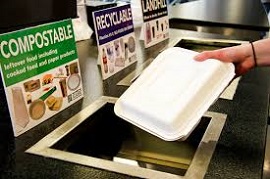As we become more aware about our impact on the planet and strive to keep New Zealand beautiful for generations to come, Kiwis are making a shift to sustainable products. Like riding a bike or walking to the neighbourhood dairy instead of driving. Or taking our own coffee cups to cafes and glass containers to supermarkets.
If you’re in the food industry, these are signs you can’t ignore. Here are some alternative sustainable packaging options to help you become a greener, more responsible business.
Paper bags
If there’s a bare minimum you can do in terms of sustainable packaging, it is this. With the ban on single use plastic bags, New Zealand has taken a step further to reduce our reliance on plastic packaging. So if you haven’t started offering sustainable options like paper bags, take a look at these ones made from recycled paper and make the switch today.
Compostable containers
If you’re running a restaurant or food truck, takeaway containers are indispensable. But Kiwi households disposed of 1.76 billion plastic containers a year, and 39% of them ended up in landfills, a report found. This is a worrying trend and underlines the need to move to biodegradable packaging options like compostable takeaway containers, like those made from recycled paper or bioplastics.
Compostable cutlery or none at all
Close on the heels of compostable containers is compostable cutlery and tableware. Green alternatives to plastic spoons, forks and straws ensure that while your food is yummy for customers, your packaging is not unpalatable for the Earth. Or better still, make “no cutlery” a default option and you’ll be amazed at how many people forgo it altogether.
Cloth Bags
Similar to paper bags, cloth bags give your customers a greener, more natural alternative to single use bags. While they are more expensive in comparison to paper bags, they do give a more premium look and feel. They are also more likely to be reused by your customers than paper bags.
Biodegradable filler packaging
If you’re shipping your products around New Zealand or even internationally, you will need to look at more than just containers and bags. You can now get green alternatives to loose-fill packaging like packaging peanuts and air pillows, letting you cut down on unrecyclable styrofoam. The wood wool is also a great fill option, especially if you want to maintain an organic look throughout your packaging and shipping processes.
Bubble wrap alternatives
As much as kids (and a few adults) love bubble wrap, it is a disaster for the planet. Corrugated cardboard offers a greener option when it comes to packaging fragile items like your glass fudge jars or homemade fruit jams. Corrugated cardboard is made by recycling post-consumer cardboard waste and offers the same level of protection from shocks as traditional bubble wrap.
These are just some simple steps you can take to help the planet, and at the same time, become an ethical brand. Join thousands of other responsible Kiwi food businesses and move to more eco-friendly packaging options now.


